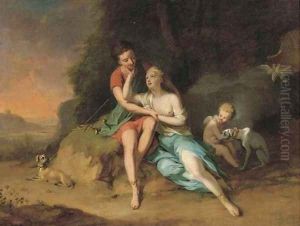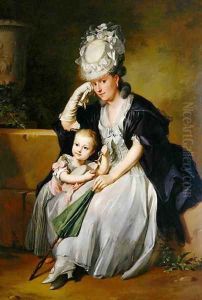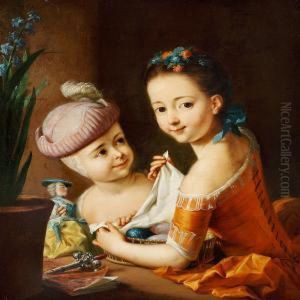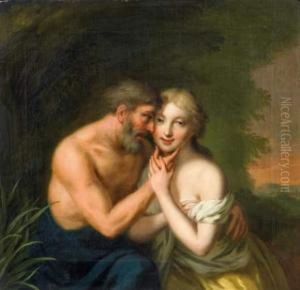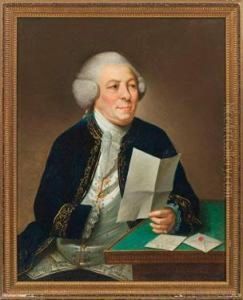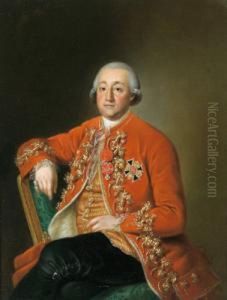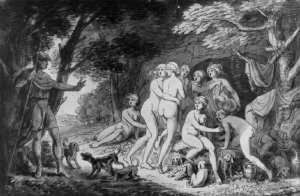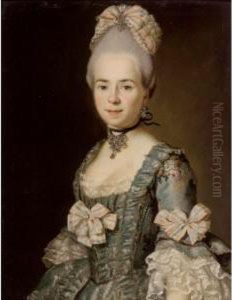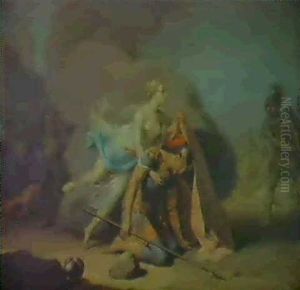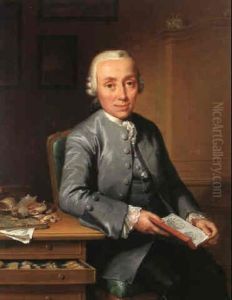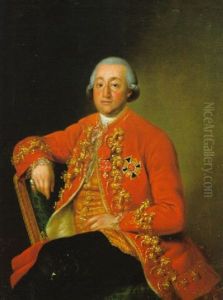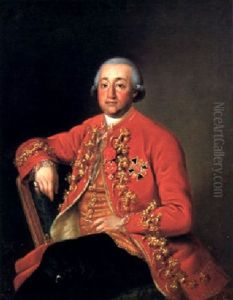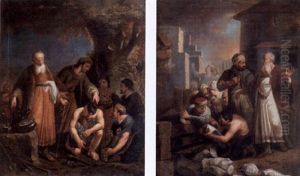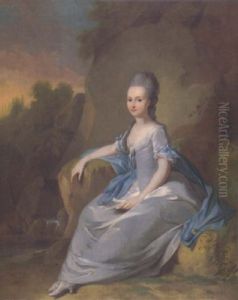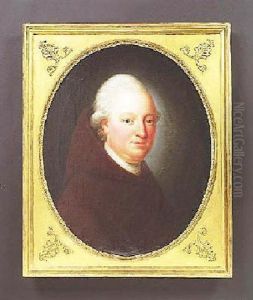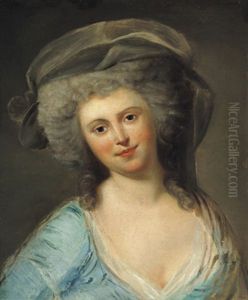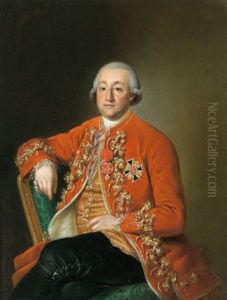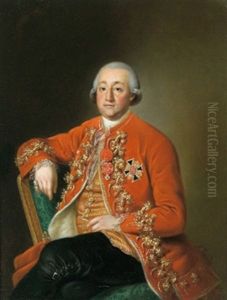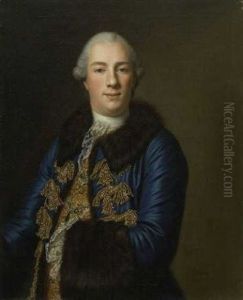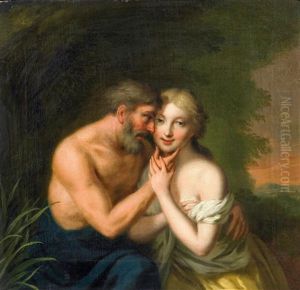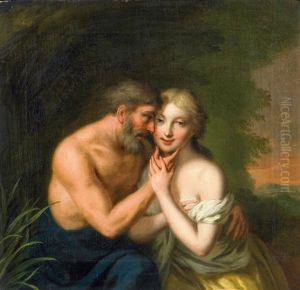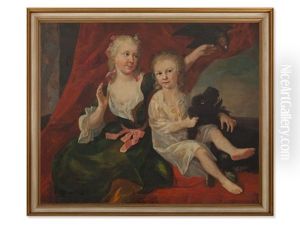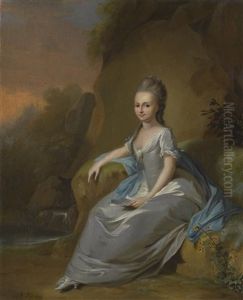Anton Wilhelm Tischbein Paintings
Anton Wilhelm Tischbein, also known as the 'Uffenbach Tischbein,' was a German painter born in 1730 in Haina, the Landgraviate of Hesse-Kassel, now part of Germany. He hailed from the prolific Tischbein family of painters, which included several notable artists such as his cousin Johann Heinrich Tischbein the Elder, also known as 'the Kasseler.' Anton Wilhelm was one of the many relatives who pursued a career in the arts, contributing to the Tischbein dynasty's reputation in the 18th century.
Tischbein began his artistic training under the guidance of his family members, learning the techniques of painting and establishing a foundation in the arts. His early work showed promise and adhered to the Rococo style that was prevalent during that period. He further developed his skills by studying the works of other artists and possibly by traveling to gain exposure to different artistic environments and practices.
Throughout his career, Anton Wilhelm Tischbein worked on various commissions, which often included portraiture and historical scenes. His style was characterized by a blend of grace and elegance, typical of Rococo sensibilities, with an attention to detail and a clear interest in capturing the character and stature of his subjects.
Unfortunately, compared to other members of the Tischbein family, such as his cousin Johann Heinrich Tischbein the Elder, who gained fame for his portraits of Goethe, Anton Wilhelm's work and influence were relatively modest. His contributions to art, while recognized within the context of the Tischbein family's collective output, did not achieve the same level of acclaim or historical significance as some of his relatives.
Anton Wilhelm Tischbein passed away in 1804. Despite not being as renowned as other family members, his work remains a part of the rich tapestry of the Tischbein artistic legacy. His paintings can be seen as historical documents that offer insights into the styles and tastes of the era in which he lived and worked. Over the years, the works of the Tischbein family have been studied and appreciated for their contribution to German art history, with each member, including Anton Wilhelm, playing a role in the development of artistic styles during the 18th century.
